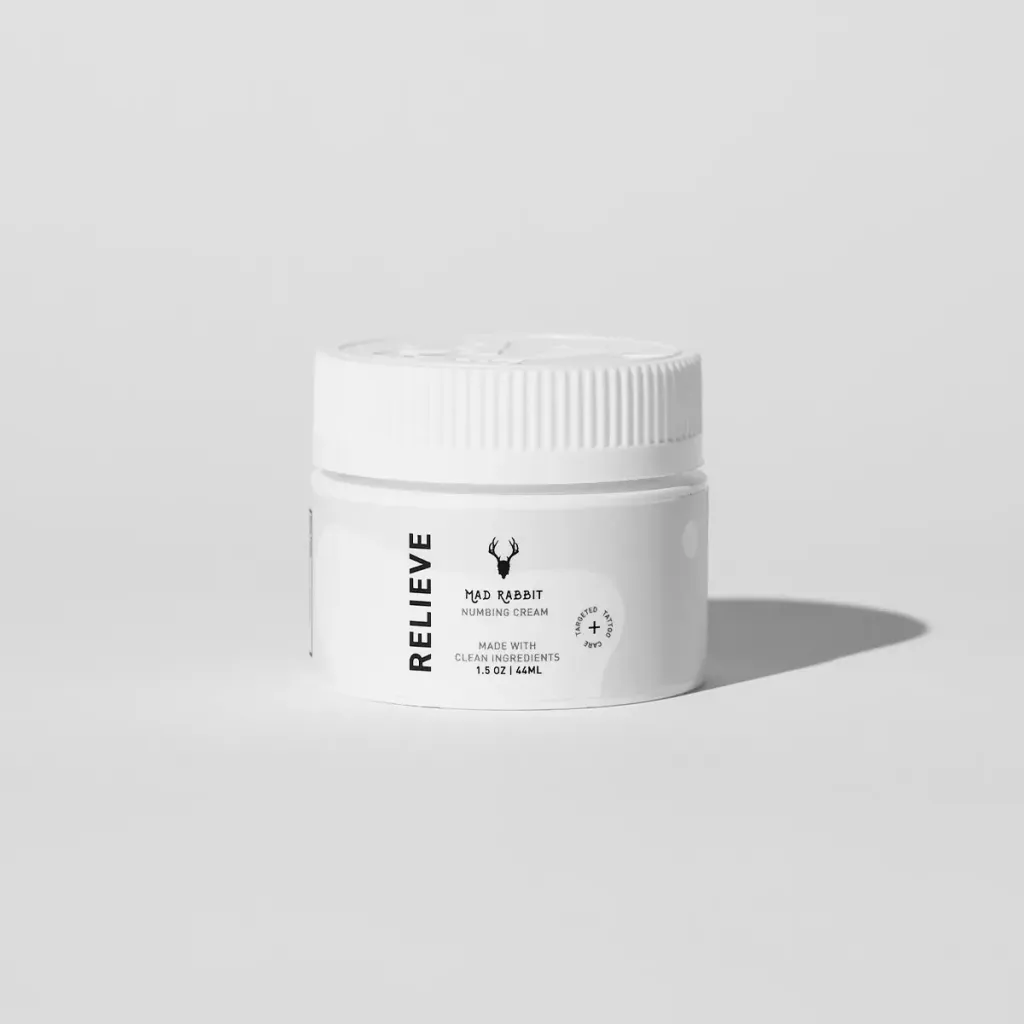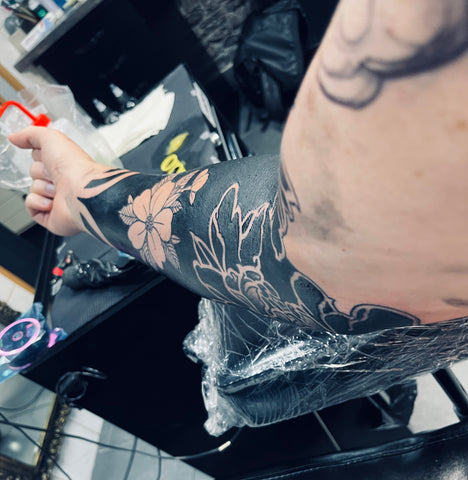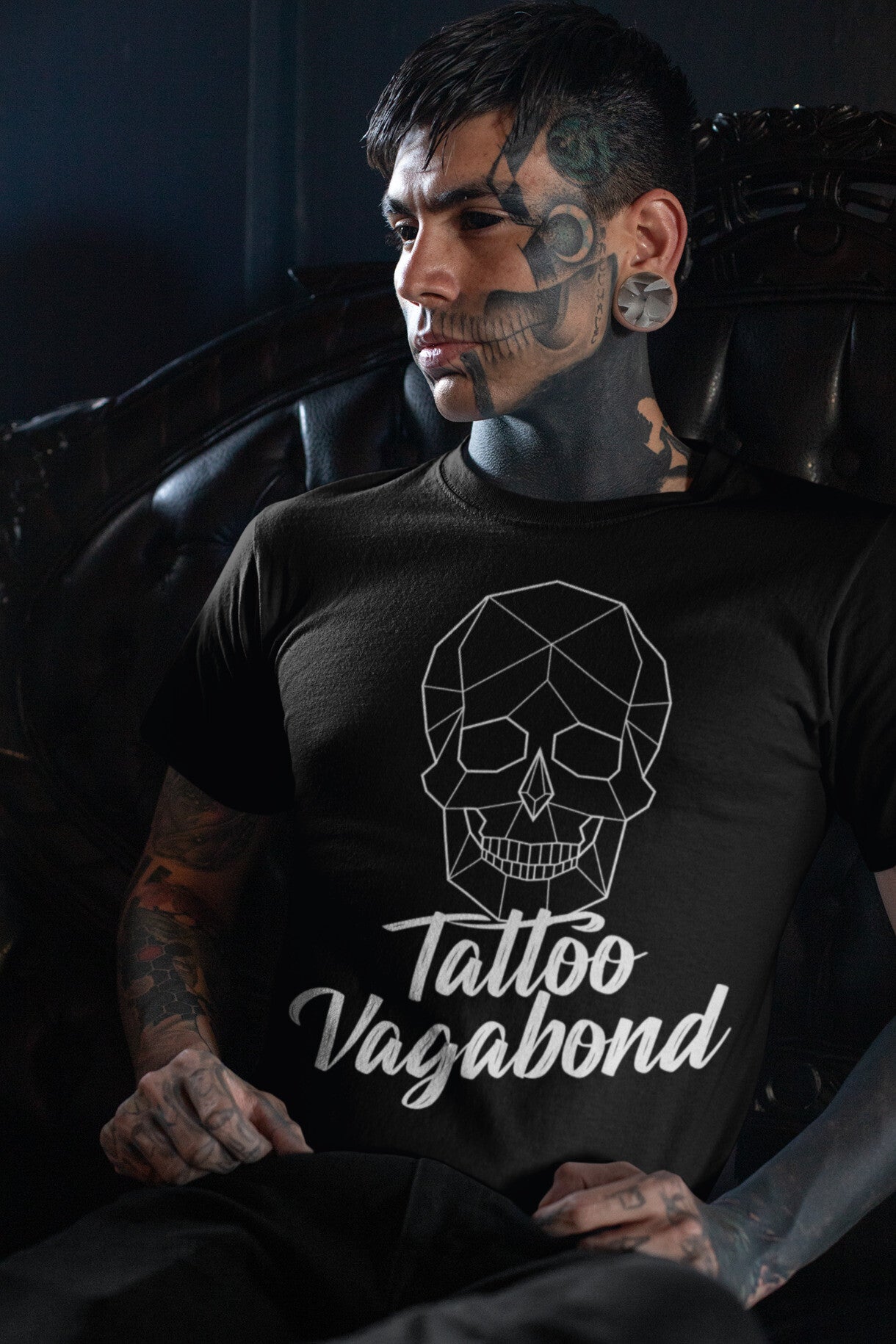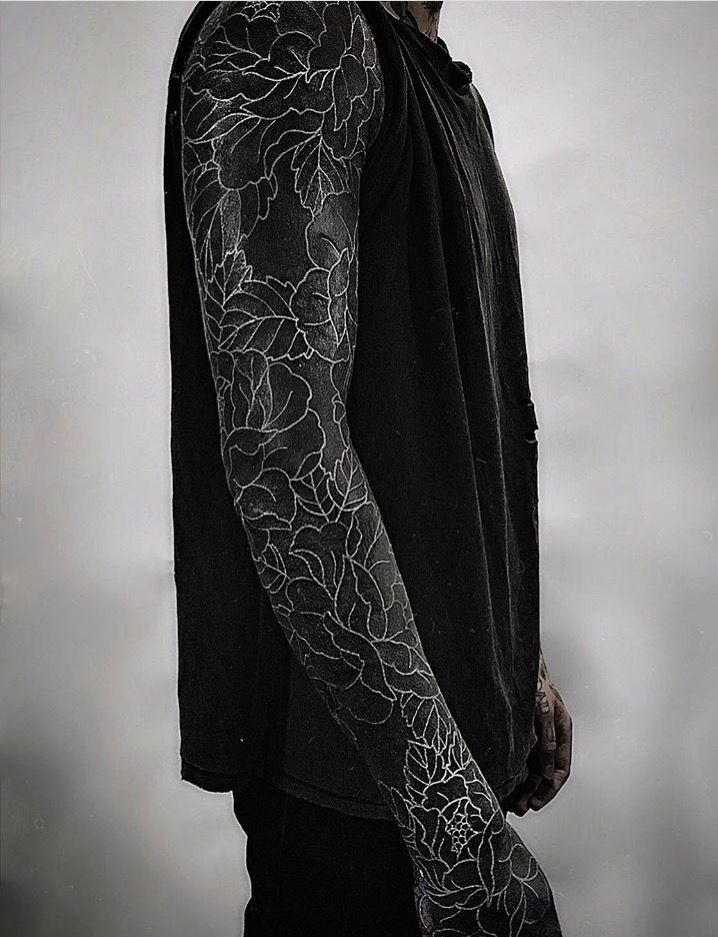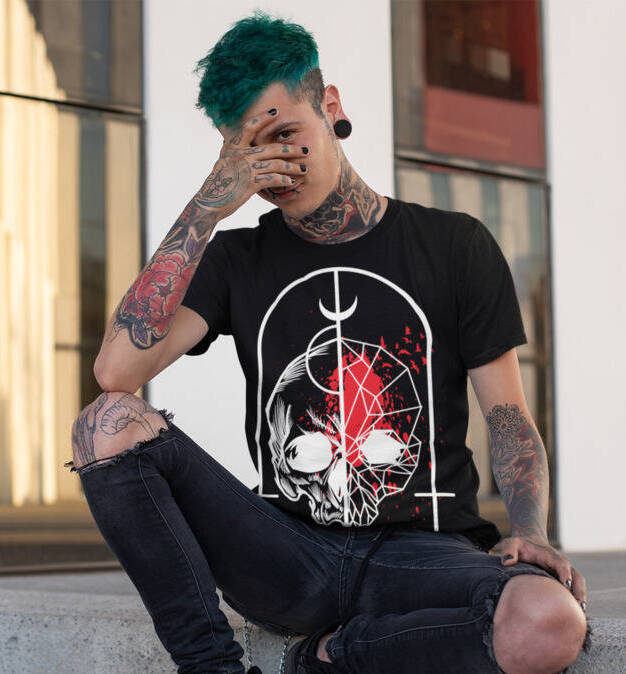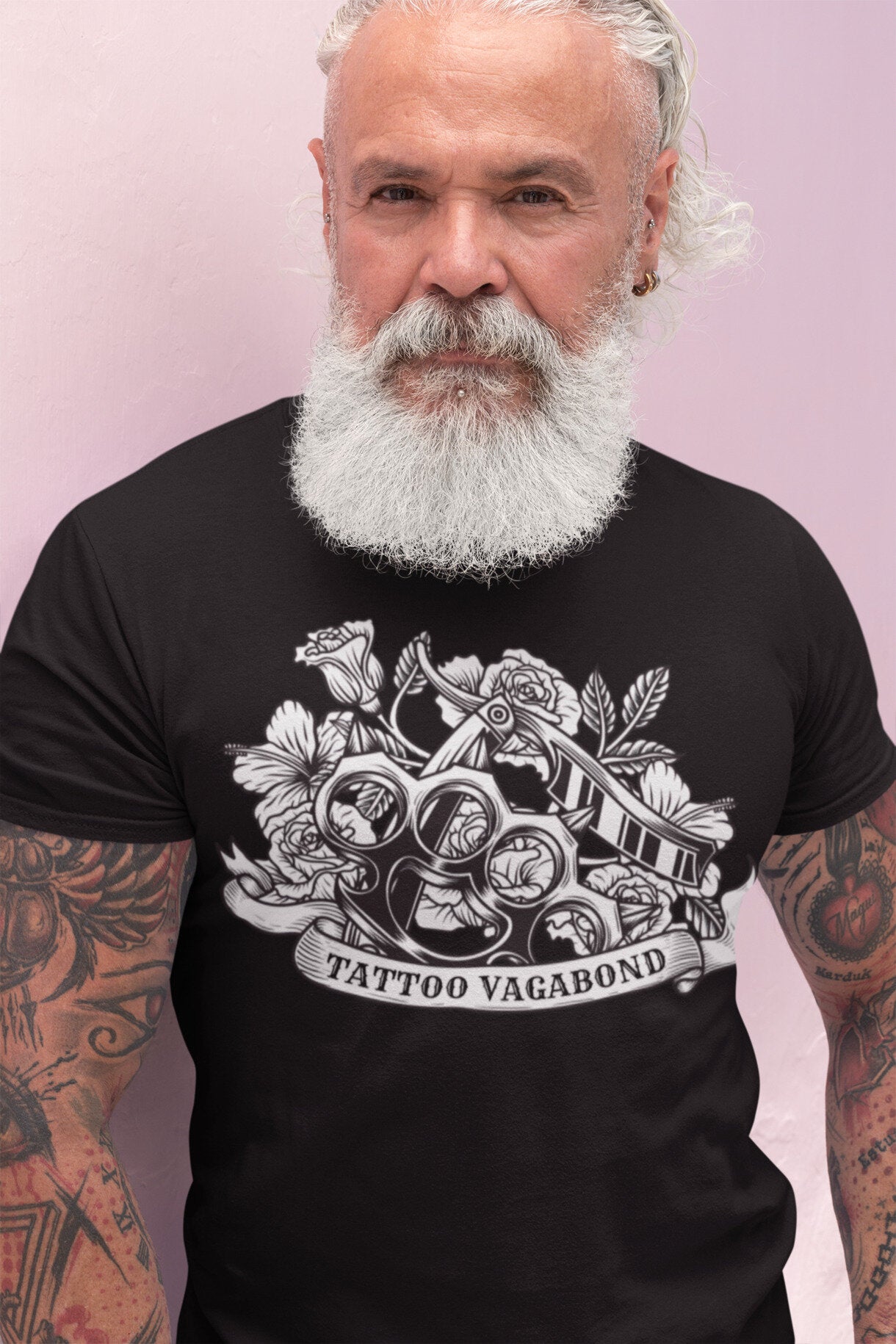I’ve personally tested and trialed more than a few numbing products over the years. And only one brand has consistently worked the way it’s advertised. It’s the numbing cream from Mad Rabbit and its what I myself use and recommend to my clients.
I’ve put the cream through its paces. I tested the cream on my own brutal blackout tattoo sleeve.
It’s one cream I can guarantee will make you numb, and you won’t feel any type of needle. If it can make my whole arm numb during a full session blackout tattoo (including armpit), it can definitely numb smaller piercings and tattoos. And, it’s what both I and my girlfriend have been using for our own piercings.
But before we discuss why Mad Rabbit has the best product, let’s answer the two most common questions asked about numbing products – What’s better, a numbing spray or a numbing cream? and what’s actually in numbing products?
What is the best piercing numbing product?
What is better for piercings, a numbing cream or a numbing spray?
Numbing creams and sprays differ in their applications. Numbing sprays do work well, but they don’t numb as effectively as a cream. A numbing spray will not penetrate as deeply, as a properly applied cream.
If you were getting an ear piercing, a numbing spray is almost good enough and will make you sufficiently numb to not feel the piercers needle in your ear lobe. Yet, if you were getting pierced through ear cartilage (helix) or a dimple piercing through your cheek, you’d want something a little more substantive.
And this is where numbing creams really come into their own, on cartilage and deep tissue piercings; where in most cases, you will still feel the sharp pain associated with a body piercers needle, if you’re only using a spray.
Yet, the downside to creams is that they must be applied before your appointment. And you should apply numbing creams 30 minutes to 1 hour before your piercing appointment for best results.
With a numbing cream, you can’t just walk in, put it on and get pierced a few minutes later feeling nothing. And most piercers won’t want to wait for your numbing cream to start working.
The major trade off between a numbing cream and a numbing spray, is time. Numbing creams are much more effective than numbing sprays. But the downside is, you’ll need longer for them to work as intended.
What is in numbing products?
The active ingredients most commonly found in numbing products used for tattoos and piercings are Lidocaine, Prilocaine, Benzocaine, Tetracaine and Epinephrine.
Lidocaine and Prilocaine are the most commonly used numbing agents for tattoos and piercings. And Epinephrine is added to some products to increase the longevity of the numbing effect.
Most numbing products have either Lidocaine or Prilocaine at 5% and if they include a second numbing agent, it’s almost always at 1% or lower. Lots of numbing products also forego the addition of Epinephrine. And this reduces the overall length of time for which you will be numb.
The numbing cream by Mad Rabbit uses the most effective and common numbing agent, Lidocaine. It has Lidocaine at 5%, which is the maximum strength product you can buy without a doctors prescription. It has all the key ingredients at their maximum allowable levels for the greatest pain reduction.
What is the best numbing cream or spray for piercings?
With Lidocaine (5%), the numbing cream by Mad Rabbit is the strongest available product on the market. Any product that claims to be stronger, isn’t. Because manufacturers are only allowed to sell up to 5% lidocaine in store or online without a prescription.
When applied 30 minutes to 1 hour before getting a piercing (or tattoo), the entire area will be completely numb. You will not feel any sharp pain. And because the cream doesn’t contain epinephrine, a powerful vasoconstrictor, you don’t need to worry about any artificial tightening of the skin leading to lopsided piercings.
I’ve personally tested dozens of other numbing creams, because they were readily available over the counter (OTC) in shops near me. And yet, most of the creams I’ve tried haven’t work as advertised.
The best numbing cream for piercings and tattoos, based on my own experience, is the product from Mad Rabbit. The cream is available direct from Mad Rabbit via their website.
Use the code TATTOOVAGABOND for a discount. And grab yourself some today at – madrabbit.com
If I can sit through a brutal blackout sleeve without feeling any pain, the numbing cream will definitely work for you. I’ve used the same product when enlarging my stretchers, getting my helix piercing and my girlfriend even used it when she got her medusa piercing!
Numbing Creams FAQ
What can I use this numbing cream for?
Mad Rabbit’s numbing cream can be used on any pain sensitive area and for any type of painful treatment. It can be used for tattoos, piercings, micro-blading, hair removal, permanent makeup, waxing and injections. It can be used on the face, just don’t get it in the eyes or mouth.
Can I reapply the cream afterwards if my piercing hurts?
You can reapply this cream after you get your piercing. My own partner continually reapplied the cream for the first couple of weeks, as her medusa piercing healed.
The primary advantage of a cream that only uses lidocaine, without any other nasty additives, is that the cream can be reapplied for longer pain relief. And because the cream isn’t a white labeled product from China, you can be sure it was made in a sterile environment.
I’ve worked in a senior compliance role for a Government medicines regulator. I’ve seen what goes into some creams and the non-sterile environments in which they’re made. Where I wouldn’t reapply those other creams to an open wound, I’m confident in the product by Mad Rabbit.
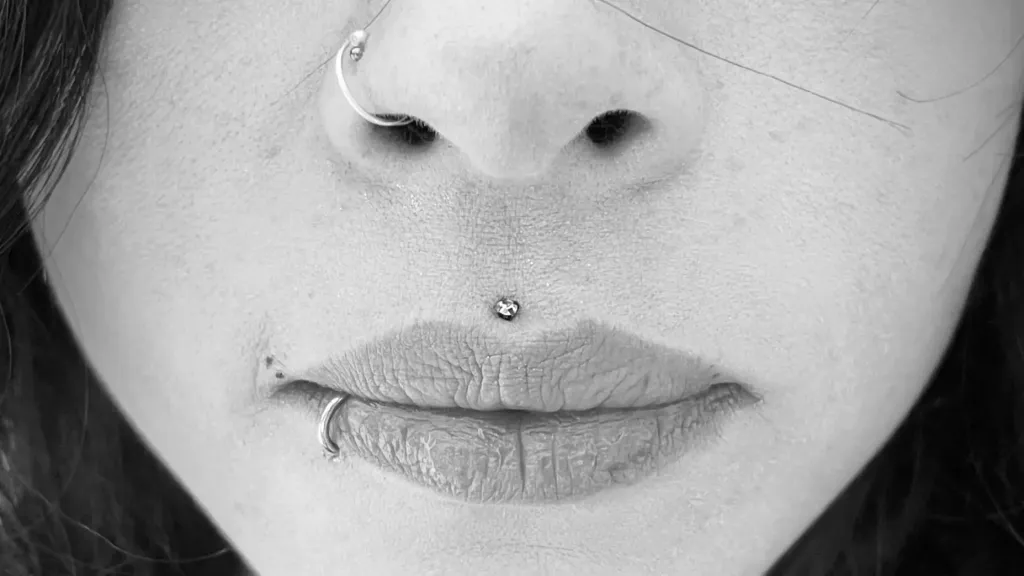
What does a numbing cream feel like?
Some sites will claim that a numbing cream can be ‘luxury’. But that’s just an indication those reviewers haven’t actually used the numbing creams that they’re reviewing.
A numbing cream correctly applied, should start to make the area to which it’s applied begin to go completely numb in under 5 minutes. Reaching full effect in about 30 minutes after application.
Is a numbing cream or spray better for an ear piercing?
I’ve used numbing cream for my own ear piercings in my lobes and cartilage (helix), when stretching my ears, my lip piercing (snake bite) and on my girlfriend for her medusa piercing and nipple piercings. I will always stand by the effectiveness of numbing creams over numbing sprays.
Should numbing creams include vitamin E?
As any tattooist will tell you, always avoid Vitamin E creams before, during and for 2-3 weeks after your tattoo session. A numbing cream containing moisturizers and Vitamin E is not advisable for tattoo or piercing procedures.
Is Zensa Numbing Cream with 5% lidocaine the strongest available?
While Over The Counter (OTC) numbing creams are limited to 5% Lidocaine, Zensa numbing cream is not the strongest.
As someone who frequently uses numbing creams and has personally tested almost all of them, over many years, I can say from my own actual personal experience that Mad Rabbit is the strongest OTC numbing cream.
What does Epinephrine do in numbing creams?
As a powerful vasoconstrictor, epinephrine in numbing creams is added in an effort to decrease swelling and increases the effectiveness of the cream. Yet it more often causes clients to develop a rash and ‘rash out’.
Constricting the blood vessels near the area to which a numbing cream with epinephrine is applied, prevents the active numbing agents from being carried away by the blood vessels. Creams without epinephrine do not numb for as long on first application, as the creams with epinephrine. Because the Lidocaine is carried away from the site by the blood vessels.
Personally, I always avoid numbing creams with epinephrine for 2 reasons;
First, creams like Mad Rabbit can be reapplied for longer sessions, so there’s no need to risk it with the epinephrine creams. And second, most of the creams with epinephrine are white labeled products from China. Meaning the people selling those creams with epinephrine, are just putting their own logos onto mass produced junk from China.
Why don’t tattoo artists and piercers like epinephrine in numbing creams?
Epinephrine artificially tightens the skin. And when the effect of a cream containing epinephrine wears off, you may find that your piercing or tattoo is crooked or deformed.
Tattoo artists and piercers dislike creams containing epinephrine, because it creates a greater risk of the tattoo or piercing being misaligned, crooked or deformed.
Yet creams containing epinephrine also have a greater risk of allergic reaction. They more often cause clients to develop a rash and ‘rash out’. And if this happens, you will still need to pay your piercer or tattoo artist for their time.
Should I wear gloves while applying a numbing cream?
You should always wear gloves when applying a numbing cream. Using your hand to apply numbing creams will make your hand go as numb as the spot to which you’re applying the cream.
To avoid the unintended numbing of your hand while applying a numbing cream, always wear gloves when applying a numbing product.
Where can I not use a numbing cream?
Numbing creams including Lidocaine, Prilocaine, Benzocaine, Tetracaine or Epinephrine are not intended for internal use.
You should not put numbing creams in your mouth or directly onto your eyes. Doing so can have serious adverse affects.
Are there contraindications for the anesthetic agents in numbing creams?
Lidocaine, Prilocaine, Benzocaine, Tetracaine and Epinephrine can all have undesirable side effects for those allergic to them. And you should ensure you have no allergies to topical anesthetics, before using numbing creams.
You should also test all numbing creams that include topical anesthetics on smaller areas before applying them to larger bodily surfaces in full for the first time. To test for allergies to the topical anesthetics contained in numbing creams, put a small dab of cream on your forearm.
If the area begins do develop a rash, you should discontinue use of the cream until you have been tested for allergies by a medical professional. Consult your doctor.
**This advice applies to all numbing creams with topical anesthetics, irrespective of the brand.**



